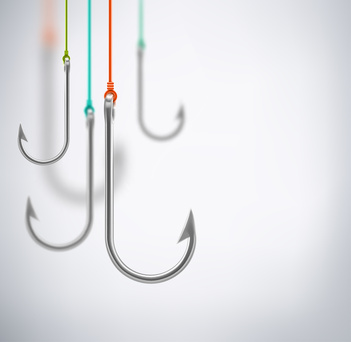
In my last blog article, we examined the Specially Designed Decision Tool. Today, we will explore the new “Catch and Release” concept when determining if a product meets the definition of “Specially Designed.”
First, here is the definition in the current ITAR. [My Notes will be in brackets, boldface, and Italics. All underlines are my emphasis and might not be emphasized in the ITAR.]
22 C.F.R. § 120.41 Specially Designed [similarly defined in 15 C.F.R. § 772.1 (EAR) Please note that there are two parts (a) and (b):]
(a) Except for commodities or software described in paragraph (b) of this section, a commodity or software (see § 121.8(f) of this subchapter) is specially designed if it:
[Paragraph (a)(1) applies to all types of items (end items and materials)]
(1) As a result of development, has properties peculiarly responsible* for achieving or exceeding the controlled performance levels, characteristics, or functions described in the relevant U.S. Munitions List paragraph; or
*[While “Peculiarly responsible” is not defined in the ITAR, it generally means more than simply having a capability. It would be similar to the definition of “required” in EAR part 772.1. I see it as having direct, immediate, contributory affiliation that is critical to attain or surpass certain performance levels; and must be a result of ‘development’, design, research, analysis, concepts, etc.]
[Paragraph (a)(2) however, applies only to parts, components, attachments, accessories and software.](2) Is a part (see § 121.8(d) of this subchapter), component (see § 121.8(b) of this subchapter), accessory (see § 121.8(c) of this subchapter), attachment (see § 121.8(c) of this subchapter), or software for use in or with a defense article.
[“Use in or with” a defense article is very broadly defined and there is no requirement for use to be significant or to have resulted from development of the part or the defense article.]
[Don’t stop here! You must read BOTH §§ (a) and (b) when determining if an item is “specially designed”.] (a) might “catch” your item but (b) might “release” it from the definition.] [§ § (b), paragraphs (1)-(5) apply only to parts, components, attachments, accessories and software. It is important to note that the definition “Specially designed” does not apply to “technology,” (as defined in the EAR) or to “technical data” (as defined in the ITAR) – with the notable exception of “software”.) “Technology” has its own set of rules, but that will not be covered here today.](b) For purposes of this subchapter, a part, component, accessory, attachment, or software is not specially designed [i.e. “released”] if it:
(1) Is subject to the EAR pursuant to a commodity jurisdiction determination;
(2) Is, regardless of form or fit, a fastener (e.g., screws, bolts, nuts, nut plates, studs, inserts, clips, rivets, pins), washer, spacer, insulator, grommet, bushing, spring, wire, or solder;
[In a recent discussion with DDTC, I was informed that Bearings are specifically and intentionally omitted from this list. Even though Bearings and Bushings can be quite similar, Bushings are considered “fasteners” for purposes of “catch and release” while Bearings are not.]
(3) Has the same function, performance capabilities, and the same or “equivalent” form and fit as a commodity or software used in or with a commodity that:
(i) Is or was in production (i.e., not in development); and
(ii) Is not enumerated on the U.S. Munitions List;
[According to the practice tip for this sub-paragraph in Bartlett’s Annotated ITAR: “This “release” from the ‘catch and release’ rule of the ‘specially designed’ definition is not applicable to USML sections that have not been revised to incorporate the “specially designed” language (e.g., Cats. I-III, XVIII).”]
(4) Was or is being developed with knowledge that it is or would be for use in or with both defense articles enumerated on the U.S. Munitions List and also commodities not on the U.S. Munitions List; [e.g. “Dual Use”] or
(5) Was or is being developed as a general purpose commodity or software, i.e., with no knowledge for use in or with a particular commodity (e.g., a F/A-18 or HMMWV) or type of commodity (e.g., an aircraft or machine tool).
In conclusion, § 120.41 (a), paragraphs (1) and (2) may “catch” an item as “specially designed”. However, if the item is “caught,” by (1) or (2), be aware that the paragraphs of § (b) may “release” the item in question from “specially designed”. Therefore, one must read BOTH §§ (a) and (b) when determining if an item is “specially designed”.
As always, I offer the caveat that, if you do not have enough technical knowledge of the product to classify it yourself, you should seek expert advice.
Tom Reynolds is the President of Export Solutions, a consultancy firm which specializes in helping companies with import/export compliance.
